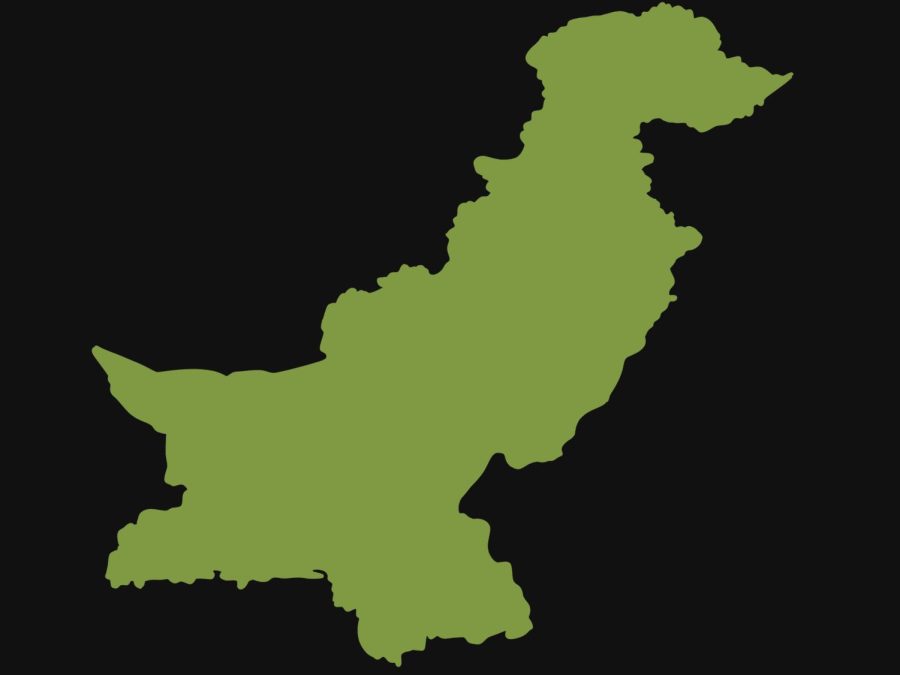Flooding in Pakistan: A precursor to uncontrolled climate change
September 29, 2022
Quotes are translated from Urdu to English by Fatimah Yousuf.
The wave of humidity that hit me after going through the doors of Jinnah International Airport in Karachi engraved a memory in my skin that I will never be able to forget. The first time I visited Pakistan, specifically Karachi, was when I was 3 years old. The only recollection I have from that visit is how hot it was. The pure humid heat made my hair double in size, and sweat gathered on my eyebrows and lips.
When talking about the weather in Pakistan, my parents have always said, “It never rains, but it’s always humid.” My parents grew up in Karachi, Pakistan, and moved to the U.S. in 2002. Their whole lives they lived in the searing heat that comes with living in a desert climate. There is a common saying in Urdu that roughly translates to “when the clouds thunder, they never pour.” When I went back to Pakistan in July of 2018, I would have agreed with that statement. The clouds would thunder and boom, but it never stormed; The air would be so full of water you thought you could collect it, but it never rained.
Pakistan’s weather works in extremes. During the dry season, there can be scalding hot temperatures that exceed 100 F, leaving you begging for it to rain. Meanwhile, during monsoon season, from July to September, it would rain so much that all everyone could do was pray for it to stop and all the people could do is watch the rain turn into flooding.
“Flooding has always been an issue,” my mom said. “There were never dams made, like in India, so flooding has always been expected in monsoon season.”
Flooding in Pakistan is not caused by mass amounts of rain but because of the lack of infrastructure in Karachi. According to Trading Economics, the average rainfall Karachi receives in a year is about 8 inches. The lack of rain changed, however, when I went back in March of 2021. The new prime minister, Imran Khan, had taken on a new endeavor: defeating climate change. As a part of this new plan, The Pakistani government claimed to have planted over a billion trees. When I was driving to my uncle’s house from the airport, I noticed there were trees lining the road to the airport. Trees were providing shade for people on the side of the road and shaking in the breeze. To me, this all seemed positive, like a step in the right direction. My grandma, my nani, however, warned us not to come to Pakistan during our summer break.
“In July, the animals start to die due to the flooding,” nani said. “The animals outside slowly float away when the floodwater starts getting too high, or they die due to sickness.”
Cholera and Dengue are prevalent during monsoon season; combined with COVID-19, diseases were rampaging the country, only in 2021. Now in 2022, flooding in Pakistan is making headlines across U.S. news platforms. According to Nature, The floods have displaced 33 million people, and satellite images show a lake forming in south Pakistan. In two months, Karachi has received 48 inches of rain despite normally only getting less than 10 inches in a year. Diseases are also rampaging the country with 3.4 million children needing life-saving support from Dengue. A common question people now have is: what caused this large increase in flooding?
Many flooding issues before 2021 were due to a lack of dams to prevent flooding and mismanagement of the relief after the flooding by the corrupt government. The main reason Pakistan is facing a tremendous amount of flooding now is because of CO2 emissions. According to Our World Data, the U.S. has emitted more CO2 than any other country to date, at around 400 billion tonnes since 1751. It is responsible for 25% of historical emissions, which is twice more than China – the world’s second-largest national contributor. This all ties into Pakistan’s current flooding problem because the tremendous amounts of rainfall are caused by climate change, specifically the increase in CO2 emissions, according to the New York Times. The world’s increase in CO2 emissions causes greenhouse gasses to melt glaciers, all contributing to the same climate issues Pakistan is dealing with through flooding.
While the U.S. isn’t the only country producing mass amounts of CO2 emissions, it is the leading country. The effects the U.S. is making on the world are not hurting the U.S. the most; it is hurting third-world countries like the one I call home. While I am safe, tucked away in the midwest, my baby cousin calls me, telling me that he’s having “rain days” like the snow days that we have here in the winter. I am sitting in the very country that is the cause of why my cousins cannot go to school, and why my uncle has Dengue and COVID-19 at the same time. I’m sitting in a country that could have prevented this catastrophe.
However, the narrative of the increasingly detrimental effects of flooding is not unique to just Pakistan. It is also happening in West and Central Africa and Iran. This is not an issue that will stay thousands of miles away. Flooding will soon be an issue that the U.S. will have to deal with head-on. The rising temperatures in California, the wildfires, and the flooding happening in different parts of the world are just a precursor to what will happen if people do not take climate change seriously. Right now, people see these catastrophes through news articles or TV screens. I see these issues through short, choppy phone calls and tired voices. The top CO2 emitter in the U.S. is fossil fuel combustion. As a student, choosing more fuel-efficient transportation or hybrid/electric cars can make a difference in the fight for climate change. Being more aware of greenhouse gas emissions and voting on legislation that makes the government take action on climate change can also make a difference. These little choices could be the very reason my cousin gets to go to school instead of seeing his city get swept away by water. Climate change is something that needs to be tackled by the whole world and needs to be tackled in the near future. If not, the issues we watch from our TV screens will soon be right at our doorstep.
How are you going to help the fight for climate change? Let us know in the comments below.




















































































Alina • Oct 1, 2022 at 2:04 pm
Pakistan Zindabad!!